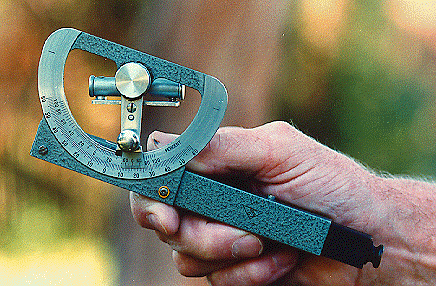|
|

The Abney Level is an engineering instrument which can be used to determine height. It is moderately expensive and of medium size and weight. Although the Abney Level is relatively robust, the bubble tube can be knocked out of alignment during rough treatment.
When used correctly, the Abney Level has an accuracy of about +/- 0.5 m for a 20 m tall tree (ie about 2.5%).
|








